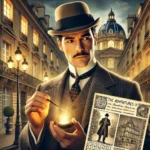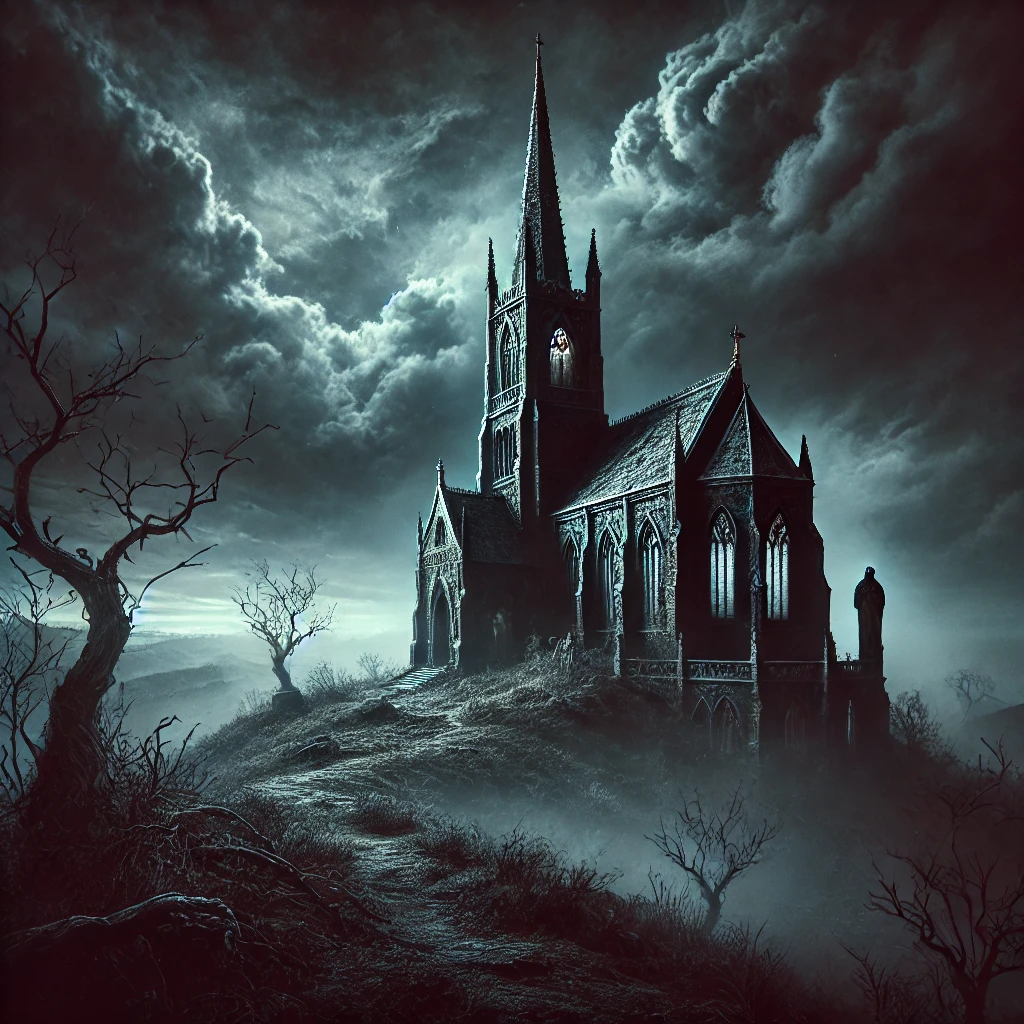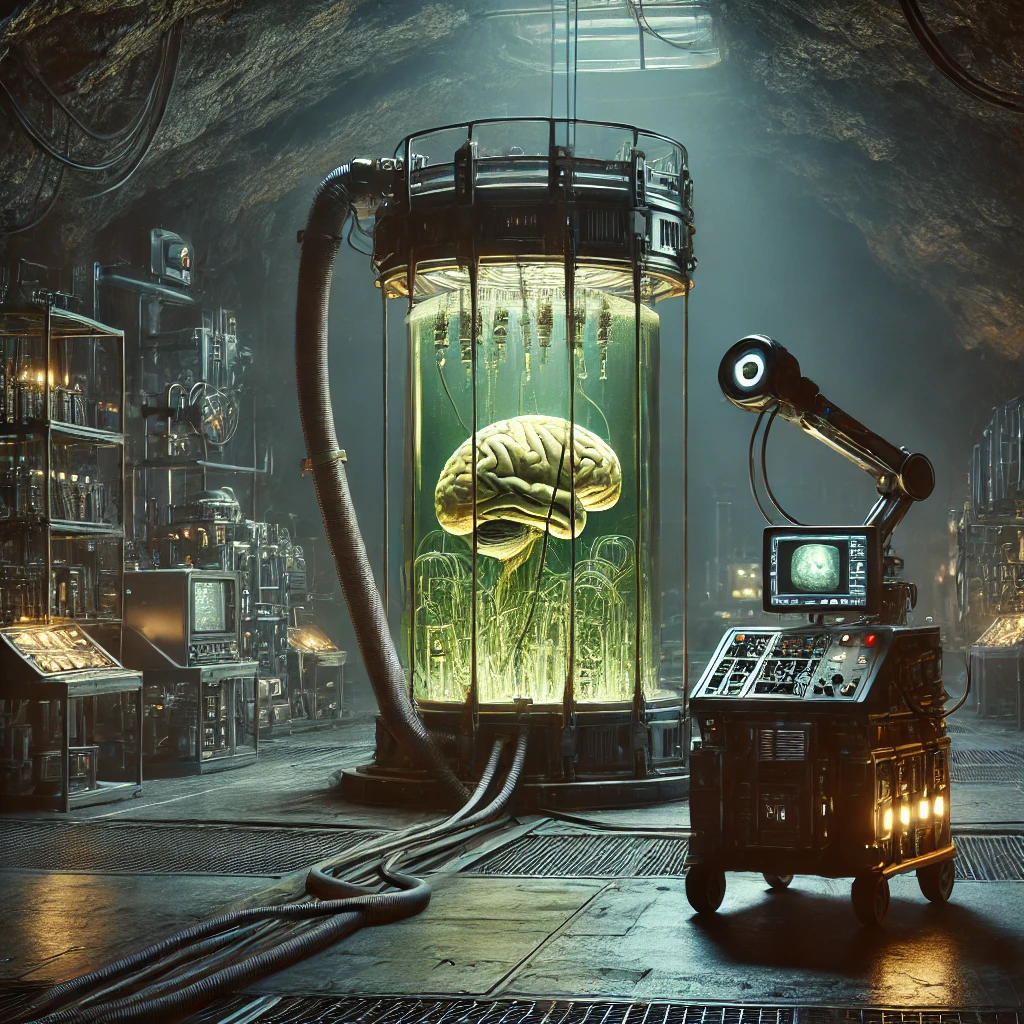“The Call of Cthulhu,” written by H.P. Lovecraft and first published in 1926, is one of the foundational works of cosmic horror. Set against the backdrop of an indifferent, chaotic universe, the story introduces the ancient, god-like entity, Cthulhu, whose very existence challenges human understanding of reality. As part of Lovecraft’s wider Cthulhu Mythos, the story explores themes of forbidden knowledge, madness, and mankind’s insignificance in the vast cosmos.
Plot Summary
Francis Wayland Thurston, a man of quiet intellect and curiosity, found his life thrust into a shadowy realm when his great-uncle, Professor George Gammell Angell, passed away unexpectedly. Angell, an esteemed professor of ancient languages, had lived a long and respected life, but the manner of his death left a cloud of unease hanging over Thurston. As the professor’s sole heir, Thurston was tasked with sorting through his papers and possessions. Among them, he discovered something strange—a box containing cryptic notes, fragments of research, and an odd clay bas-relief. These documents would come to reveal a terrifying secret that had driven men to madness and death.
The strange clay artifact immediately seized Thurston’s attention. It depicted an abominable creature—part octopus, part dragon, and vaguely humanoid. Along with this grotesque image were unfamiliar hieroglyphs, none of which Thurston could identify. But it was not the relic itself that truly unnerved him. Rather, it was the accompanying notes from his late uncle, particularly one labeled “Cthulhu Cult.” As Thurston delved deeper into Angell’s research, he learned of a young artist named Henry Anthony Wilcox, who had come to the professor with tales of horrifying dreams. Wilcox claimed to have seen strange, towering cities in his sleep, with monstrous beings lurking within, and had sculpted the bas-relief after awakening from one such vision.
Wilcox’s dreams had begun during a brief seismic event, and his disturbing descriptions of enormous, ancient stone cities buried deep beneath the ocean immediately reminded Angell of something he had encountered years earlier. Thurston pieced together his uncle’s investigation—how Angell had interviewed the young man regularly, noting the consistency and intensity of his visions. Wilcox’s dreams spoke of “Cthulhu,” an ancient being that lay dormant beneath the waves, waiting. But just as suddenly as they began, Wilcox’s dreams stopped, and the young artist remembered nothing further.
Angell’s notes revealed another encounter, far more sinister and tangible. In 1908, while attending an archaeological meeting in St. Louis, the professor had been approached by a police inspector from New Orleans, John Raymond Legrasse. Legrasse had brought a bizarre statue to the conference, seeking advice on its origins. The statue, made from an unidentifiable stone, bore an uncanny resemblance to Wilcox’s bas-relief—an inhuman figure, grotesque and alien. Legrasse explained that his discovery had occurred during a raid deep in the swamps of Louisiana, where he and his men had interrupted a horrifying ritual performed by a strange cult.
The cultists were a ragged, savage group of men from diverse backgrounds, many of whom claimed to worship ancient beings known as the “Great Old Ones.” The centerpiece of their worship was Cthulhu, a being that existed before humanity, imprisoned in the submerged city of R’lyeh, lying dormant but not dead. Their chant, Legrasse had recorded, was incomprehensible yet chilling: “In his house at R’lyeh dead Cthulhu waits dreaming.” As Legrasse recounted his investigation, it became clear that the cultists believed that one day Cthulhu would rise again when the stars were right, and humanity would be swept away by its return.
Further disturbing accounts had followed. Angell’s notes included the tale of an earlier encounter with similar esoteric knowledge in the Arctic, where a group of isolated Eskimos had engaged in blood-chilling rites around a crude stone idol. These groups, separated by continents, cultures, and oceans, shared knowledge of Cthulhu, a being whose existence preceded human memory. Angell had become obsessed with piecing together these fragments of forgotten lore, tracing how such knowledge had survived for centuries among hidden sects and ancient mythologies. The idea that such a creature could lie in wait beneath the sea, slumbering, sent his rational mind spiraling toward dread.
As Thurston read deeper, the story took a more immediate turn. A small clipping from an Australian newspaper reported the sighting of a derelict ship in the Pacific Ocean. The steam yacht Alert had been found drifting, with its crew either dead or missing. The lone survivor, a Norwegian sailor named Gustaf Johansen, recounted a terrible experience. Johansen and his crew had been attacked by a strange vessel manned by savage men, only to find themselves stranded on an uncharted island. There, they encountered something beyond comprehension.
The island was not just any landmass—it was the risen city of R’lyeh, where the architecture defied the laws of nature. The landscape twisted in impossible ways, and the geometry itself seemed to pulse with malevolence. While exploring, Johansen and his men had unknowingly released something from the depths: the creature Cthulhu, an immense and nightmarish being whose very form defied human understanding. Described as a walking mountain, Cthulhu rose from the submerged city, its terrible bulk crashing through the sea. In their panic, Johansen’s crew scattered, many falling victim to the abomination’s flailing tentacles.
In a desperate, mad act of survival, Johansen had steered their ship directly into the creature, managing to temporarily disrupt its physical form. He and his last surviving crewmate had escaped, though the other man later succumbed to madness and died. Johansen himself survived long enough to recount his tale in a manuscript Thurston now held, but it was clear that his mind had been shattered by what he had seen. The entity that had risen from the sea was no mere creature—it was a god, something ancient and terrible, whose existence made a mockery of human life and civilization.
Thurston closed his great-uncle’s papers, understanding now why the professor had wished to keep these findings hidden. The truth he had uncovered was too terrifying to be shared, for it undermined everything humans believed about their place in the universe. Cthulhu, the slumbering god, would rise again, and there was nothing humanity could do to stop it. As Thurston reflected on all he had learned, a sense of impending doom washed over him, for he now understood that some knowledge is too terrible to bear, and perhaps, it is better left in the dark, beneath the waves, where the elder gods still dream.
Main Characters
Francis Wayland Thurston: The story’s narrator and the grand-nephew of Professor George Gammell Angell. His curiosity drives him to uncover the disturbing truth about the Cthulhu Cult, which ultimately shakes his understanding of the universe.
Professor George Gammell Angell: A noted scholar of ancient languages at Brown University. His investigation into the Cthulhu Cult and its links to ancient, cosmic entities begins the narrative. His death under mysterious circumstances leaves clues for Thurston to piece together.
Henry Anthony Wilcox: A young and eccentric sculptor who experiences vivid dreams of monstrous landscapes and ancient beings after a strange bas-relief appears. His dreams provide a key to the existence of Cthulhu.
Inspector John Raymond Legrasse: A New Orleans police officer who investigates a cult that worships Cthulhu. His account of a raid on the cult offers crucial insight into the global reach of Cthulhu worship and the madness that follows those who encounter it.
Cthulhu: The central figure in the story, though not a traditional “character.” Cthulhu is an ancient cosmic entity imprisoned beneath the ocean, whose awakening threatens the sanity of all who come into contact with it. It symbolizes chaos, the unknown, and the futility of human existence.
Theme
Cosmic Horror: Lovecraft’s central theme is the vast, uncaring universe filled with incomprehensible beings far beyond human control or understanding. The existence of Cthulhu suggests that humans are powerless in the face of such ancient forces.
Forbidden Knowledge: The story deals with the consequences of uncovering knowledge that should remain hidden. The pursuit of this knowledge, whether by Professor Angell or Thurston, leads to madness or death, emphasizing the danger inherent in probing too deeply into cosmic mysteries.
Madness: Many characters in the story—particularly Wilcox and members of the Cthulhu cult—experience madness as a direct result of their contact with the entity. The story suggests that the human mind is not equipped to comprehend the vastness of cosmic reality.
Isolation: Thurston’s gradual isolation as he uncovers more about Cthulhu reflects the isolation of humanity in the universe. The characters who come into contact with Cthulhu are increasingly cut off from normal human life, spiraling into despair or insanity.
Writing Style and Tone
Lovecraft’s writing style in “The Call of Cthulhu” is dense, formal, and filled with archaic language that adds a layer of gravitas to the cosmic horror at its core. His choice of an academic and documentary style, using letters, journal entries, and reports, gives the story a sense of realism, making the fantastical elements seem grounded. This “found document” structure mimics the fragmented nature of forbidden knowledge, as the narrator pieces together disparate facts to reveal the terrifying truth.
The tone of the story is relentlessly dark, pessimistic, and often awe-struck. Lovecraft’s use of elaborate descriptions emphasizes the otherworldly nature of Cthulhu and the ancient civilizations that worshiped it. The narrator is consumed by the terror and helplessness that comes from glimpsing the true scale of the cosmos, leaving readers with a lingering sense of dread.
We hope this summary has sparked your interest and would appreciate you following Celsius 233 on social media:
There’s a treasure trove of other fascinating book summaries waiting for you. Check out our collection of stories that inspire, thrill, and provoke thought, just like this one by checking out the Book Shelf or the Library
Remember, while our summaries capture the essence, they can never replace the full experience of reading the book. If this summary intrigued you, consider diving into the complete story – buy the book and immerse yourself in the author’s original work.
If you want to request a book summary, click here.
When Saurabh is not working/watching football/reading books/traveling, you can reach him via Twitter/X, LinkedIn, or Threads
Restart reading!








